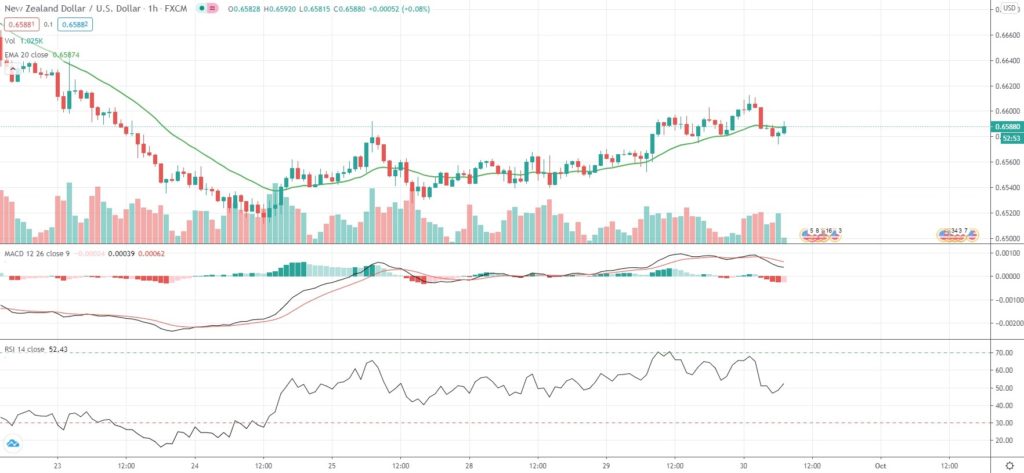NZD/USD was holding gains from the previous trading day in early European session on Wednesday. Still, however, the major pair was set to register its first monthly loss since March, being down 2.26% so far in September, as market players expect the Reserve Bank of New Zealand to introduce negative interest rates and adopt further measures to keep the kiwi exchange rate lower.
On the macroeconomic front, business sentiment in New Zealand sharply improved in September, a report showed earlier on Wednesday, with the respective index rising to -28.5, or its highest level since February, due to growing confidence a second COVID-19 outbreak in the country has been brought under control.
Meanwhile, a fierce first presidential election debate between Republican Donald Trump and Democrat Joe Biden, marked by numerous interruptions and insults, has had a limited impact on the Foreign Exchange market.
Investors were also keeping a close eye on developments surrounding a new US fiscal stimulus package. House Speaker Nancy Pelosi expressed hopes on Tuesday that a coronavirus aid deal with the Trump administration could be reached this week. A day earlier Pelosi said that Democrats had unveiled a new $2.2 trillion fiscal stimulus bill. However, according to White House economic adviser Larry Kudlow, this figure is still considered as too high.
“We believe it is unlikely the stimulus bill progress in its current form. The House Democrats stimulus bill is more than $1 trillion above what key Republican policymakers are willing to consider,” Commonwealth Bank of Australia currency analyst Kim Mundy wrote in an investor note.
“The U.S. economic recovery is at risk without more fiscal stimulus and as a result, USD is vulnerable to additional upside in the short term.”
As of 7:03 GMT on Wednesday NZD/USD was edging up 0.10% to trade at 0.6589, after earlier touching an intraday high at 0.6613, or a level not seen since September 23rd (0.6648).
In terms of economic calendar, a report by Automatic Data Processing Inc at 12:15 GMT may show employers in the US non-farm private sector hired 648,000 workers in September, as expected by analysts. In August, private businesses hired 428,000 employees.
A separate report by the US Bureau of Economic Analysis at 12:30 GMT may show economy contracted at a final annualized rate of 31.7% in Q2, thus, confirming the second GDP estimate. It has been the sharpest rate of contraction ever recorded. In Q1, US GDP shrank at a final 5%.
And at 13:45 GMT ISM-Chicago Inc will report on manufacturing activity in the region. The Chicago Business Barometer probably remained in the expansion area for a third straight month in September, according to market expectations, coming in at a reading of 52.0. In August, the gauge was reported at 51.2.
Bond Yield Spread
The spread between 1-year New Zealand and 1-year US bond yields, which reflects the flow of funds in a short term, equaled 6.9 basis points (0.069%) as of 6:15 GMT on Wednesday, or unchanged compared to September 29th.
Daily Pivot Levels (traditional method of calculation)
Central Pivot – 0.6578
R1 – 0.6607
R2 – 0.6632
R3 – 0.6662
R4 – 0.6692
S1 – 0.6552
S2 – 0.6523
S3 – 0.6498
S4 – 0.6473






